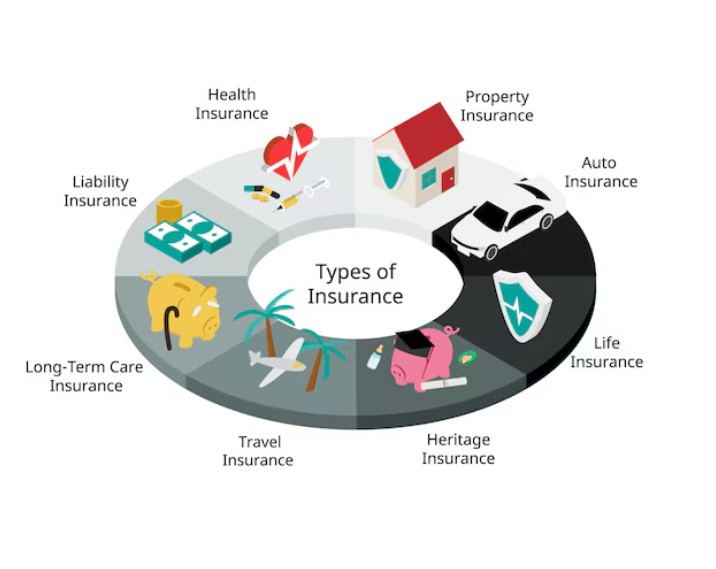Introduction to Insurance Coverage
Navigating the world of insurance can feel like trying to decipher a complex puzzle. With so many options available, it’s easy to get overwhelmed. But understanding the different types of insurance coverage is crucial for protecting yourself and your assets. Whether you’re looking to secure your health, safeguard your home, or ensure that your loved ones are taken care of in case of an unexpected event, knowing what type of coverage you need is essential. This guide will break down the various forms of insurance available today while offering insights on how to make informed decisions that suit your unique circumstances. Let’s dive into the essentials and demystify this vital aspect of financial security!
Types of Insurance Coverage:
Insurance coverage comes in various forms, each designed to protect you from different risks. Understanding these types is crucial for making informed choices.
Health insurance provides essential medical care coverage. It helps with hospital bills, doctor visits, and prescriptions. Ensuring you’re protected against unexpected health issues is vital.
Life insurance offers financial security for your loved ones after you pass away. This type of policy can help cover debts or support family members during tough times.
Auto insurance protects you on the road. It covers damages resulting from accidents and theft while also meeting legal requirements in most states.
Homeowners or renters insurance safeguards your living space and belongings against damage or loss due to events like fire or theft. It’s an essential layer of protection for anyone who owns a home or rents an apartment.
Disability insurance is often overlooked but incredibly important. It ensures that if you’re unable to work due to illness or injury, you’ll still receive income support.
A. Health Insurance
Health insurance is a crucial part of financial planning. It provides coverage for medical expenses, ensuring you don’t face crippling bills in times of need.
There are various plans available, from employer-sponsored options to individual policies. Each offers different levels of benefits and costs.
Understanding terms like premiums, copayments, and deductibles can be overwhelming. However, knowing these details helps you make informed choices about your healthcare needs.
Preventive care is often included with health insurance. This means regular check-ups and screenings can keep you healthy without additional costs out-of-pocket.
Choosing the right plan involves assessing your personal situation—considering factors like family history and lifestyle habits. It’s not just about finding the lowest premium; it’s also about comprehensive coverage that suits your unique circumstances.
B. Life Insurance
Life insurance is one of the most crucial financial tools you can have. It provides a safety net for your loved ones in case something unexpected happens to you.
There are various types of life insurance policies available, each designed to meet differing needs. Term life insurance offers coverage for a specific period, while whole life provides lifelong protection and builds cash value over time.
Choosing the right policy depends on factors like your age, health, and financial goals. It’s essential to assess how much coverage your dependents would require to maintain their lifestyle after you’re gone.
Many people overlook this aspect of planning but securing adequate life insurance can ease stress during difficult times. It ensures that bills are paid and children’s education remains unaffected even when life’s uncertainties strike unexpectedly.
C. Auto Insurance
Auto insurance is essential for any vehicle owner. It provides financial protection in case of accidents, theft, or damage. With the right coverage, you can drive with peace of mind.
There are several types of auto insurance policies. Liability coverage pays for damages to others if you’re at fault in an accident. Comprehensive and collision cover your own vehicle’s damage from various incidents.
Understanding state requirements is crucial before purchasing a policy. Some states mandate minimum liability coverage while others require uninsured motorist protection. Choosing more than just the bare minimum often offers better security.
Your driving record impacts your premiums significantly. Safe drivers typically enjoy lower rates compared to those with frequent claims or traffic violations.
Consider factors like mileage and vehicle type when selecting a plan. Each element plays a role in determining your overall rate and level of coverage needed for effective protection on the road.
D. Homeowners/Renters Insurance
Homeowners and renters insurance are essential for safeguarding your space. Whether you own or rent, these policies provide peace of mind against unexpected events.
For homeowners, this type of insurance covers the structure itself, personal belongings, and liability in case someone is injured on your property. It protects you from losses due to fire, theft, and natural disasters—essentially anything that could disrupt your life.
Renters insurance focuses on protecting tenants’ belongings inside a leased space. It often includes coverage for personal items like electronics and furniture while also offering liability protection.
Both types can vary widely in terms of coverage limits and premiums. Understanding what’s included is crucial to ensure you’re adequately protected without overpaying for unnecessary features. Always assess the specific needs based on location and lifestyle to tailor your policy effectively.
E. Disability Insurance
Disability insurance provides crucial financial support when you can’t work due to illness or injury. It acts as a safety net, ensuring that your bills and daily expenses are covered during challenging times.
This type of coverage typically replaces a portion of your income, allowing you to focus on recovery rather than worrying about finances. Policies vary widely in terms of benefits and waiting periods, so it’s essential to read the fine print.
Short-term disability insurance covers temporary setbacks, while long-term disability insurance offers extended protection for more serious conditions. Both can be vital depending on your job and personal circumstances.
Many employers provide some form of disability coverage, but it may not always be enough. Evaluating private options ensures you’re adequately protected against unexpected events that can disrupt your life significantly.
Importance of Having Multiple Types of Coverage
Having multiple types of insurance coverage is crucial for financial security. Life can be unpredictable, and being prepared for various risks helps you navigate challenges more effectively.
Consider health insurance. It protects against high medical costs, ensuring you have access to necessary care without draining your savings. Similarly, auto insurance safeguards you from the financial burden of accidents or damages related to your vehicle.
Homeowners or renters insurance provides peace of mind by covering property damage or theft. This type of protection is especially vital in today’s world where natural disasters can strike unexpectedly.
Disability insurance adds another layer by helping replace lost income if you’re unable to work due to illness or injury. Each policy serves a unique purpose and collectively strengthens your safety net.
By investing in different forms of coverage, you create a robust defense against life’s uncertainties. It allows you to focus on what truly matters—your well-being and that of your loved ones.
How to Choose the Right Coverage for You?
Choosing the right insurance coverage can feel overwhelming. Start by assessing your personal needs. Think about your lifestyle, assets, and any potential risks you may face.
Next, consider your budget. Determine how much you can afford to spend on premiums without stretching your finances too thin. This helps narrow down options significantly.
Research different providers and their offerings. Look for companies with strong customer reviews and a reputation for reliability.
Don’t hesitate to seek advice from professionals or consult friends who have experience in navigating insurance choices.
Periodically review and adjust your coverage as life changes occur—like marriage, purchasing a home, or starting a family—to ensure it continues meeting your needs effectively.
Understanding Policy Limits and Deductibles
When delving into insurance policies, two concepts stand out: policy limits and deductibles.
Policy limits refer to the maximum amount your insurer will pay for a covered loss. Understanding these figures is crucial as they can vary widely between different types of coverage. If you exceed this limit, you’re responsible for any additional costs.
Deductibles are the amount you’ll pay out-of-pocket before your insurance kicks in. A higher deductible often results in lower premiums but means more upfront cost when filing a claim. Finding the right balance based on your financial situation is essential.
Both elements influence how much protection you truly have during an unforeseen event. Take time to review them carefully when selecting your policy to ensure adequate coverage tailored to your needs.
Tips for Lowering Your Insurance Premiums
Review your coverage regularly. Adjusting your policy to reflect current needs can save you money.
Bundling is a smart move. Many insurers offer discounts for combining multiple policies, like home and auto.
Maintain a good credit score. Insurers often check your credit history when determining premiums. A better score usually means lower costs.
Increase your deductible if you’re comfortable with it. A higher deductible can result in significant savings on monthly payments.
Take advantage of discounts offered by insurers. These may include safe driving records, low mileage, or completion of defensive driving courses.
Consider shopping around annually for the best rates. Different companies have different pricing strategies, so it pays to compare options.
Make sure to ask about any other available discounts that could apply specifically to your situation; every little bit helps.
Conclusion: The Importance of Protecting Yourself with the
Protecting yourself with the right insurance coverage is essential in today’s unpredictable world. Life can throw unexpected challenges your way, and having a safety net can make all the difference. Whether it’s health issues, accidents, or property damage, being adequately insured means you won’t face these situations alone.
Each type of insurance serves its purpose and addresses different risks. From safeguarding your health to securing your home and car, understanding each option allows you to build a comprehensive plan that suits your needs. The peace of mind that comes from knowing you’re covered cannot be overstated.
Choosing the right coverage requires careful consideration of your individual circumstances. Assessing policy limits and deductibles will help you tailor plans effectively while also keeping costs manageable. Taking proactive steps to lower premiums by comparing rates or bundling policies further enhances financial security without sacrificing quality coverage.
Investing time into understanding various types of insurance ensures you’re prepared for whatever life brings your way. It’s not just about protecting assets; it’s about ensuring stability for yourself and loved ones when it matters most. Prioritizing this aspect of personal finance translates into greater confidence as you navigate everyday challenges.




